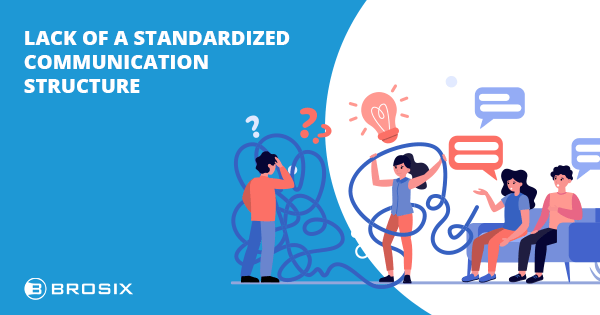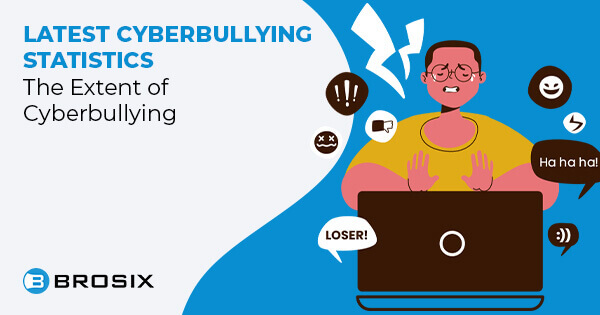It will come as no surprise that today’s work environment is predominantly remote and digital. Meaning that organizations should put – now more than ever – a greater emphasis on effective workplace communication procedures.
Effective workplace communication is a key component that can make or break a business – regardless of its size.
As the latest workplace communication statistics have indicated, effective communication processes are paramount for employee productivity and retention.
For example, did you know that 97% of workers say that communication impacts their task efficiency on a daily basis? Or that more informed employees have 77% higher work productivity than less informed workers?
However, establishing optimized communication procedures – tailored to each business’ needs – is not as easy as it may sound. It requires a lot of effort and implies overcoming numerous workplace communication challenges.
Communication challenges at work are more varied and nuanced than you might first imagine. Depending on the medium used, there are different types and distinct levels of involvement needed to solve them.
To help you improve your company’s communication, we’ve compiled a list of the most common communication challenges in the workplace and some tips on how to overcome them.
What are the greatest challenges to effective communication?
1. Time zones
With the rapid uptake of remote work, modern companies have seized the opportunity to bring the best professionals into their teams, hiring talent from all around the globe.
Truthfully, there are numerous benefits to having employees working in different time zones. Just to name a few – increased response and client satisfaction, and ultimately the company’s profit, are some good examples.
Nonetheless, as profitable as this can be for a business, it can also lead to one of the most prominent communication challenges.
As a result of not being able to communicate in real-time, co-workers from different time zones may find themselves stuck on different projects or tasks. This may lead to serious delays or missed deadlines, which have a negative impact on a business.
Usually, spread-around-the-world employees have regular calls to catch up on the latest work news.
However, some projects require more frequent updates than others, which may be difficult to coordinate due to differing time zones.
Besides regular check-in calls, it’s also recommended to have a weekly or daily online team calendar in which employees update their task status at the end of the day. This way, it’s easier for beyond-the-border colleagues to know the exact status of projects and where they should pick up from.
2. Language barriers and cultural differences
Adding on to the first communication challenge presented, language barriers and cultural differences can also lead to serious miscommunication.
Misinterpretations of words and gestures can create animosity and conflicts that negatively impact team cohesion.
Reluctancy to collaborate due to poor interpersonal relationships among co-workers because of cultural differences can cost businesses greatly. Which is why fostering cross-cultural communication through intercultural training is absolutely necessary within a multicultural company.
3. Finding the right communication tools and technologies
From communication tools to design tools, and everything in between, the internet is full of tools and apps these days. Luckily, you are probably just a google search away from solving most of your company’s needs.
Nonetheless, when talking about organizational communication – finding the right tools and communication channels is often one of the most acute communication challenges.
E-mails, for example, continue to be a primary channel used for business communication. Thanks to their professional tone, they make a great external communication channel. On the other hand, because of that same formality, they may not be as effective in the case of internal communication.
We all know how hard it is to find the relevant information needed lost in a sea of emails, probably many unimportant, and how much time this wastes.
For day-to-day communication between employees, it may prove more efficient to implement a team chat with some audio and video features.
The major advantage of such a tool is that it could make your workforce more time-effective. Moreover, it can help build stronger interpersonal relationships.
Often used also for sharing memes, GIFs, and so on, this kind of communication channel can help employees loosen up and have more relaxed conversations.
Finding the right communication technology represents a pressing communication challenge. Using the wrong one can lead to delayed response times and the loss of precious information.
This is a vital element that can influence a business’s success.
Pro tip: when researching the right communication tools for your business, consider those that offer the most solutions to all of your needs!
Brosix, for example, is an all-in-one team communication tool that can help you be time-effective, not having to switch between tools for various tasks.
It has a wealth of features, like file transfers, screen sharing, voice and video chat, and more, to help you meet your company’s needs.
4. Lack of a standardized communication structure

Implementing an effective communication process within an organization involves testing and adjusting a couple of variables. Especially when considering larger companies.
On one hand, it demands finding the right tools and mix for different tasks and projects.
On the other hand, it requires a more strategic approach. Equally implying setting a clear and effective communication plan between upper management and employees across all levels.
If your company is lacking a communication plan, and you’re thinking about creating one – remember it should offer you answers to the following questions:
- How will the flow of communication be handled between same-level employees, and also between them and the department director? Will there be daily meetings or reports covering project updates or employees’ needs?
- How will the most important company updates be delivered to employees – through an internal call or an official email?
5. Lack of effective communication processes overall
Every business is different, thus every internal communication plan will reflect that.
An important takeaway is that there should be included actions for every communication level – lateral, downward, and upward communication.
When it comes to having a bulletproof downward communication plan, special attention should be given to potential crisis situations. During the COVID19 pandemic, for example, most employees said that they would have loved to receive more regular company updates.
Managers should remember that transparency in these types of situations is vital for any company’s survival. In the volatile, modern work environment, regular check-ins with employees are crucial for employee retention.
In the case of upward communication, the information that needs to be discussed comes from employees. As a result, there cannot be a pre-established schedule and formula for solving every problem.
Nonetheless, managers that want to give their employees a voice could host regular short reviews/talks regarding latest projects and ask for feedback from employees.
Lastly, to foster lateral communication within a company, department directors should provide and implement communication opportunities wherever possible. Regular meetings or so-called “daily’s”, including covering the manager’s own attendance and report are a great way of doing that. Through managers sharing their own activity updates the group becomes more unified and feels valued.
As there are three distinct types of workplace communication (downward, upward and lateral) there should be specifically targeted plans of action to foster each one of them.
Effective communication in the workplace is most likely to flourish when an internal communication plan is implemented, with actionable steps for all three fundamental communication scenarios.
Inconsistent communication channels
Remember when we talked about how imperative it is for an organization to set a clear internal communication plan? That’s because different messages are better delivered through specific communication channels.
The first thing to do is decide on the most helpful communication tools for your business. After that, it’s recommended to have consistency in your way of delivering company news.
Having inconsistent communication channels, which means random switches between tools, is a communication challenge many of today’s employees frequently deal with.
Instead of investing valuable time in their tasks, employees are more likely to waste time when searching for the information needed across all the communication channels available.
Therefore, businesses can face a severe workforce productivity drop by not keeping consistency in how internal communication is organized.
Lack of employee engagement

Adding to our list of communication challenges, is a lack of or low employee engagement.
How so?
Honestly, employee engagement is a key factor in improving workplace communication.
As long as, on their part, there is no interest in listening, your efforts to facilitate effective communication in the workplace will be in vain.
Finding the right messages to motivate your employees is essential. It is, indeed, one of the hardest communication challenges to overcome, but is likely to totally transform your business for the better.
The more driven and receptive a company’s employees are, the more they will bring to a business. This usually translates into time efficiency, as there’s no need for extra back-and-forth explanations. Consequently, it can result in shorter deadlines needed and, ultimately, in an increased capacity for taking on new projects.
Hence, once you have your workers’ commitment, you’ll soon see the results in their performance and your company overall.
Lack of feedback
Offering feedback is considered a communication challenge by many, especially when related to negative feedback.
Although it’s never pleasant to give someone bad news, feedback is required for personal and professional evolution. After all, without knowing that something needs improvement, how can anyone refine their skills?
Nevertheless, feedback is a two-way street.
For a company to improve its internal communication and grow, feedback from both lower-level employees and upper management is valuable and necessary.
As much as none of us particularly enjoy criticism, in the end, sincere, constructive, and development-oriented feedback is in the best interests of both the business and employees.
Information overload
Keeping your employees up to date regarding important business decisions is a fantastic way to encourage employee engagement.
Meanwhile, overwhelming them with irrelevant information, flooding their inboxes and interrupting their workflow and focus is not ideal.
Unnecessary meetings or e-mails cause distractions, which affects productivity, and should be avoided at all costs. Before calling a meeting or sending an email, carefully consider if all the topics covered are relevant to the extended team.
Ultimately, oversharing information can waste company resources and causes employees to lose precious time.
Company information and department news should be disseminated according to a well-thought out internal communication plan, as mentioned earlier.
Lack of collaboration
The latest workplace collaboration statistics show that 75% of employees rate teamwork and collaboration as very important. Moreover, collaboration is among the top four most important skills for employees’ future success.
As data emphasizes, collaboration across teams and departments within an organization is crucial for professional growth and a thriving company.
So, how does lack of collaboration become a communication challenge for businesses?
Most probably each of us can think of a situation when we were forced to work with our least favorite colleagues. In these circumstances, adaptability is essential.
Regardless of potential animosity and past or current conflicts, projects are quickly derailed if the people involved do not put their personal feelings aside. Since this clearly presents potential risks for a company, preventive measures should be taken.
Some businesses try to foster collaboration and cultivate a fruitful communication flow between co-workers through various problem-solving activities. Team buildings are, for example, one of the most enjoyable and effective ways of inspiring collaboration.
Poor onboarding communication
To become a valuable asset to a company, every new employee must undergo a well-planned and rigorous onboarding process.
Facilitating the new employee’s integration requires the preparation of clearly understandable onboarding guidelines and training sessions.
Especially in the case of remote working, onboarding has evolved into a heavier process, becoming a challenge that can cause ineffective workplace communication.
The downside of working remotely is that it reduces the shared experiences among team members. Hence, forging strong interpersonal relationships becomes harder, especially for newly integrated people.
Effective workplace communication in the context of remote work can easily be disturbed by technical glitches.
For a new hire, it’s only natural to feel overwhelmed at the beginning with the amount of information received. We’ve all been there and know what it’s like, right?
Being a newbie and not knowing where to turn for help can be daunting and frustrating.
Adapting to a new workplace entails a trial and error process that managers have to be understanding and empathetic towards.
To ease the new hire’s onboarding process, managers can choose to temporarily use a single communication tool where they provide all the needed onboarding information.
Additionally, introducing new pieces of information during the onboarding process can prove to be a more efficient tactic than swamping a new team member with all the information at once. That’s because this way, employees can assimilate faster.
Furthermore, the onboarding communication and overall process will likely run smoother if managers encourage new employees to ask questions – whenever necessary.
An open-door policy is recommended for creating trust and inspiring employee engagement.
Poor cross-team coordination

While there are several departments within a company, each with its own clearly defined role, when you’re evaluating your business’s performance, you look at it as a whole.
This means that regardless of their independence, an organization’s departments should always stay connected.
Poor cross-team coordination happens when one or more parties fail to convey all key components of their shared tasks completely.
Poor interdepartmental coordination is a communication challenge that businesses should manage carefully as it could prevent a business from fulfilling its goals.
Additionally, when departments fail to communicate effectively, the business may face a series of repercussions – from client complaints to monetary loss.
Poor communication skills
There is no shame in admitting that some people are better at communicating than others.
For extroverts, for example, communication comes as naturally as breathing. On the other hand, for introverts, it may raise challenges sometimes.
Truth be told, the secret to communicating effectively is trying.
Even if some of us are not natural communicators, the good news is that if there’s a will, there’s a way.
Luckily, there are plenty of courses and training sessions on the internet these days that can help you develop better communication skills.
Realizing the importance of effective communication within the workplace, more and more companies have started implementing communication programs for their employees.
They may be focused on foreign language courses – to strengthen the multinational workforce. Or on interpersonal communication, and so on. The growing interest in effective internal communication is obvious.
Additionally, when conducting a recruitment process, HR agents and managers pay special attention to a candidate’s communication skills. Often, these very skills are investigated and greatly influence the hiring decision.
Having employees with poor communication skills is a communication challenge as it hinders the overall communication and may hold the company back.
Hiring people with excellent communication skills is imperative for businesses, as employees are a direct reflection of an organization.
Information silos
The last point on our list of communication challenge examples is information silos.
Be it an email, presentation, notes etc, it refers to situations when information is concealed or simply lost. Information silos clearly present communication challenges as they can lead
to delays, duplicate work, and so on.
Communication challenges via different communication platforms
Communication challenges within organizations can appear at many points along the communication flow.
Sometimes roadblocks appear because of the communication channels used, how the information is presented, or how feedback is given.
Given the current popularity of remote and hybrid working, most internal communication has become technology-mediated.
Consequently, it’s only logical that these primary communication challenges would occur via digital communication channels.
To give a clearer picture, we’ll briefly outline the most common communication challenges across different channels.
1. Messages and video calls
Messages are possibly the most popular means of communication nowadays. That’s because they deliver information quickly and do not need an immediate reply.
However, messaging raises a communication challenge, as the lack of paraverbal elements like tone of voice can lead to misinterpretation.
Moreover, nowadays, people often limit their communication to emojis.
Even though they are indeed helpful for sending information quicker, emojis, unfortunately, lack the emotional implication of a written message or verbal communication.
This, in the end, leads to more superficial interpersonal relationships and less investment in improving overall communication.
Video calls, on the other hand, strengthen the closeness between people. Even though, people seem somehow reluctant to them.
Since video calls demand real-time communication, it is not recommended for every situation.
One of the major risks of using this type of communication is the technical errors that may arise. A poor connection, display errors or interruptions, to name a few, can put a real damper on a video call’s efficacy.
2. Face-to-face communication
Face-to-face communication can often be one of the most effective ways of communication, however this is not always the case.
As it relies heavily on people’s state of mind at a specific time, face-to-face communication can sometimes prove quite ineffective.
Influencing factors for successful face-to-face communication’s success are usually attitude, listening skills, and emotional barriers.
As long as people are unwilling to pay attention to a certain topic or have a negative attitude towards it, organizational communication is very unlikely to improve.
That is why occasional team buildings are recommended – to allow employees to loosen up around their co-workers, strengthen trust, and communicate more easily overall.
Wrap up
The communication challenge examples presented above are the most common and, at the same time, the most impactful for businesses nowadays.
Hopefully, the in-depth analysis of each of them helped you better understand how they affect a company, and what solutions exist to remedy them.






